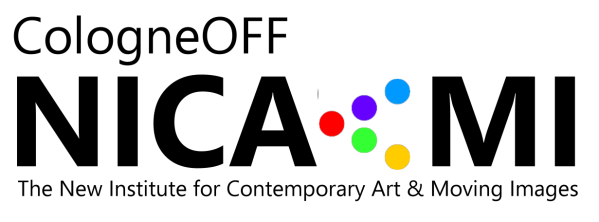Since its foundation in 2000, The New Museum of Networked Art was serving as a forge for experimenting in the (at that time) new field of (digital) media in contemporary art – this is particularly good for a new type of curating as an artistic (and additionally) networked process – curating as a contemporary form of contemporary art.
All the projects Agricola de Cologne was initiating since 1 January 2000 until these days were following this goal. Although not completely new in 2000, virtual art existed already in diverse manifestations before, however, now through a new approach to curating, virtual art got a new and most individual future orientated manifestation as the result of curating. Curating as a new tool for creating (contemporary, virtual) art.
The developments of this type of curating were from the beginning close connected with the current state of technology.
While the “new†curating formed the basis for artistic/curatorial projects in the new field of Internet based art (also called “netartâ€) when after 2004 the broad bandwidth technology made streaming video possible and popular, Agricola de Cologne was able to realise what he had in mind already since 2000 to design/create a new form of collecting this new digital art, which might allow him sometimes later when technology was more advanced, to use interactive and moving images (through global networking – by including creation by artists, curators to be sensually experienced) as artistic/curatorial tools and the basis of new artistic/creative processes generating in individually activated viewers individual images through reflecting, curating as a tool for communicating by activating reflective processes.
The RRF Project was pioneering in this concern, because Agricola de Cologne created in the framework of this global networking project (2003-2007), VideoChannel as a (virtual space/platform for curating and presenting (streaming) videoart – online. Everybody who had Internet access was able to review/experience the new collection of videoart generated via the new type of curating and collecting.
It was only consequent, when Agricola de Cologne used his new knowledge again for experimenting by founding in 2005 – CologneOFF- Cologne Online Film Festival, an unusually successful concept based on an open system which – due to its conceptual flexibility – was able to react immediately on new insights. The numerous invitations to present the programs of his new virtual festival project on physical festivals advanced the project concept consequently. Already from 2006 on, Cologne OFFm now changing into Cologne International Videoart Festival- was acting as a festival in an exchange between virtual and physical space, whereby CologneOFF was keeping always its virtual status, while networked partners in shape of physical festivals and cultural institutions served as a platform for CologneOFF’s physical manifestations.
Due to its duality, a platform for experimenting and encouraging artists and curators to experiment and the nomadic status of its physical manifestations (in 2011 and 2012 more than 30 manifestations each year) CologneOFF was undergoing fundamental developments/ changes.
The festival was growing in any concern, so that it became necessar, also due to the growing collections of art videos, to establish additional festival/presentation formats ( for instance, art and animation – animate Cologne or 1minuteCologne – one minute videos) so that in 2012 CologneOFF became the international festival platform – nomadic all over the world.
But as a festival project, the running time of CologneOFF was already conceptually limited at its start 2005, the effort to maintain the status quo was exorbitant, and consequently, after 10 years – 10 festival editions – CologneOFF stopped 2014 as a videoart festival, but continued as a nomadic platform for art and mobing images transporting the next projects (to come after 2014) to physical networking partners on all continents.
Cologne OFF remained until today the forge for experimenting in the field of art and moving images – their creating, as well as curating and collecting.
While the field of moving images is unusually popular with artists, and video generally became a mass phenomenon and moving images dominate daily life – art video, video art, art and moving images, in which way one may call and define this artistic field, it remains a field of art and therefore it will never get the same popularity with the general audience, also because its general concept is fundamentally different than the filmic/cinematographic/advertising video.

